 The first time that I visited Ivor Darreg (in 1981) he was living in Glendale, California. I was impressed by his amazing array of experimental instruments, but what grabbed me most was his re-fretted guitars. He had a large collection of them, guitars that he had carefully altered over the years. There were so many that it was a veritable feast to me! I had never played re-fretted guitars before, and it was almost overwhelming. Many of his guitars were pretty trashy – Ivor was not a wealthy man, but his dedication to the exploration of alternative tunings was quite impressive. A handful of them were pretty good – I think that I played all of them for a few minutes that unforgettable day. He had guitars in 19-ET, 22-ET, quarter-tone, 17-ET, and other odd divisions, but the sweetness of the 31-ET guitar impressed me most. It was also right at the `edge’ of the possible, or so it seemed to me. There were so many frets, so close together, how could you possibly put more frets on a guitar? Some years later I played a 34-ET guitar, and it largely confirmed the sentiment. From that day forward, I had an interest in 31-ET guitars.
The first time that I visited Ivor Darreg (in 1981) he was living in Glendale, California. I was impressed by his amazing array of experimental instruments, but what grabbed me most was his re-fretted guitars. He had a large collection of them, guitars that he had carefully altered over the years. There were so many that it was a veritable feast to me! I had never played re-fretted guitars before, and it was almost overwhelming. Many of his guitars were pretty trashy – Ivor was not a wealthy man, but his dedication to the exploration of alternative tunings was quite impressive. A handful of them were pretty good – I think that I played all of them for a few minutes that unforgettable day. He had guitars in 19-ET, 22-ET, quarter-tone, 17-ET, and other odd divisions, but the sweetness of the 31-ET guitar impressed me most. It was also right at the `edge’ of the possible, or so it seemed to me. There were so many frets, so close together, how could you possibly put more frets on a guitar? Some years later I played a 34-ET guitar, and it largely confirmed the sentiment. From that day forward, I had an interest in 31-ET guitars.
Although I could `noodle’ my way around the fretboard, I soon found that it was almost impossible to play because I would invariably get lost. What fret am I on, and what chord is this? I then realized that the problem could be solved if some colour-cocle would be painted onto the neck for visual guidance. Ivor had a colour-code (rather complex) for his megalyra steel-guitar, but his `normal’ guitars were generally unmarked. On standard guitars, we generally use an inlay dot at the 5th, 7th, and 12th frets as the `colour-code’, and arguably this is adequate for 12-ET, but 31-ET is so complex (rich) that this traditional system no longer proves adequate. I began several years of experiment with alternative colour-codes trying to come up with an optimal design.
In fact, I caught the `guitar-altering bug’ from Ivor, and when I was back in Canada I acquired a semi-trashy electric guitar which seemed perfect for `experimentation’. (What is there to lose?) I had never done a guitar fret job before, so I assumed that the results would be pretty bad. To my surprise, the scale turned out to be pretty close to accurate, there was only a minimum of `buzzes’, and I now had my own 31-ET guitar! At this point, my irnerest in colour-codes intensified. By 1984, I had several designs which arguably have some consistent logic underlying them. The purpose of this little article is to lay out the reasons for my chosen design. Here is why I ended up with this particular pattern.
Click on the link to see the article in your browser or right-click to save the file to your drive.
http://siementerpstra.com/writings/Terpstra-Fretboards.pdf

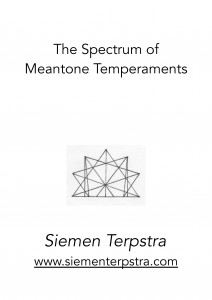





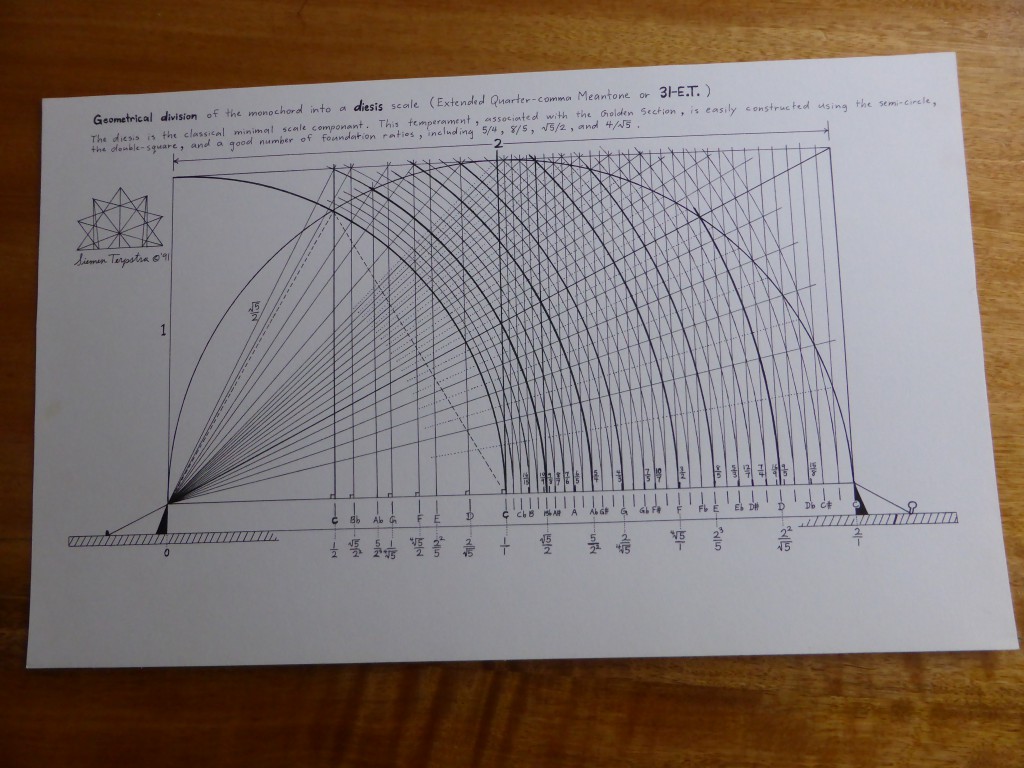

 The first time that I visited
The first time that I visited  The author examines an interesting and neglected set of harmonies that make up the diminished scale. Along the way he demonstrates the usefulness of the Expansion Index as an organisational tool. In addition, he makes some introductory remarks concerning the comparative musical theory of tonal harmony.
The author examines an interesting and neglected set of harmonies that make up the diminished scale. Along the way he demonstrates the usefulness of the Expansion Index as an organisational tool. In addition, he makes some introductory remarks concerning the comparative musical theory of tonal harmony.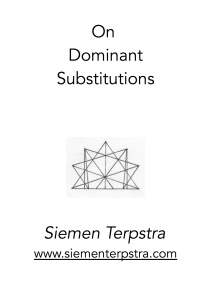 The author looks at a variety of substitutions for V7 and IVm6 within tonal harmony and why such procedures work. Meanwhile he explores some fundamental issues of music theory.
The author looks at a variety of substitutions for V7 and IVm6 within tonal harmony and why such procedures work. Meanwhile he explores some fundamental issues of music theory. The author examines a variety of chord progressions within tonal harmony. In order to better understand the syntax or ‘flow’ he defends a morphological toll called the Reciprocity Model of chord progression. With this aid he looks at some interesting features mainly oriented around the extended meantone fabric of harmony.
The author examines a variety of chord progressions within tonal harmony. In order to better understand the syntax or ‘flow’ he defends a morphological toll called the Reciprocity Model of chord progression. With this aid he looks at some interesting features mainly oriented around the extended meantone fabric of harmony.
 The author introduces a device that enable the rapid analysis of harmonic functions and related chores. He explains how the idea developed over time in his pursuit of ergonomics, as well as some essential features of the device.
The author introduces a device that enable the rapid analysis of harmonic functions and related chores. He explains how the idea developed over time in his pursuit of ergonomics, as well as some essential features of the device.


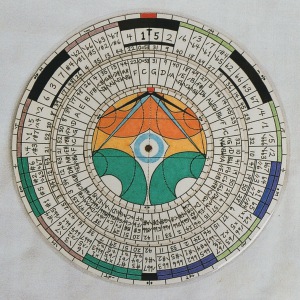
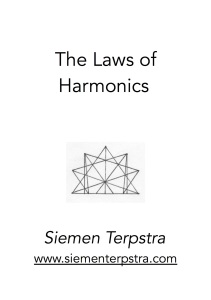 Starting in the middle 1980’s, around the time that I wrote up A Short List of Musical-Cosmological Monochords, I began a patient compilation of diagrams. Most of them consisted of elaborate tables showing numerous just ratios calculated in cents, as well as some speculative monochords and representations of the Harmonic Series. I meant this work to accompany a text that sums up my investigations into Harmonics. Inevitably, it reflected my interests during the seventies and early eighties – just intonation, drone-based music, and monochords. I never got around to writing the text, though I left a couple of pages of notes. After a few years I scrapped the whole project and archived it under the rather imposing heading: The Laws of Harmonics. Recently I dragged it out of its storage to reconsider the project.
Starting in the middle 1980’s, around the time that I wrote up A Short List of Musical-Cosmological Monochords, I began a patient compilation of diagrams. Most of them consisted of elaborate tables showing numerous just ratios calculated in cents, as well as some speculative monochords and representations of the Harmonic Series. I meant this work to accompany a text that sums up my investigations into Harmonics. Inevitably, it reflected my interests during the seventies and early eighties – just intonation, drone-based music, and monochords. I never got around to writing the text, though I left a couple of pages of notes. After a few years I scrapped the whole project and archived it under the rather imposing heading: The Laws of Harmonics. Recently I dragged it out of its storage to reconsider the project.